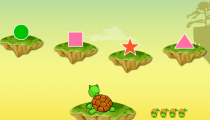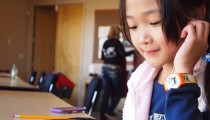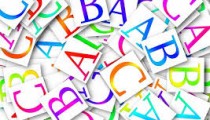If learning isn’t fun, your child isn’t going to learn.…

Two Activities to Help Kids Understand the Solar System
Kids love learning about the solar system. It’s no coincidence that one of the most popular science fair entries is the solar system mobile made of paper mâché and coat hangers. There’s real value to this type of hands-on learning that is an effective supplement to textbooks, videos and interactive computer games.
A great place for kids to begin learning basic solar system facts is by playing solar system games and watching solar system videos for kids. Then to reinforce that learning, plan to get physical with hands-on activities that will help kids to get a better sense of our solar system and how it works. Here are two we recommend:
Activity: What makes the planets circle around the sun?
They already know that planets move around the sun. But what role does gravity play in determining their paths?
To help them find out, fasten a string to a ball or buy any one of a number of available ball-on-a-string games. Tell your young astronomers that they are the sun, the ball is a planet, and the string is like gravity. Then have them swing the ball around them.
After a few loops, point out how the ball moved in a circle around them, and ask what we call that circle (an orbit). Also ask: what would happen to the ball if the string broke?
The answer is that the ball would fly off (you can demonstrate this by swinging the ball around you and letting go of the string). Without the sun’s gravity, the planets would fly off into space just like the ball. The sun’s gravity holds our solar system together.
2. Activity: Are the planets all the same size?
They know from the solar system games they’ve played and from solar system videos for kids that some planets are bigger than others and some are smaller. But how much bigger and smaller are they? This activity will helps kids to better grasp the relative sizes of the planets with a scale that is easy to see and understand.
Using the measurements below, make planets out of playdough — there are recipes for playdough on the internet. The sizes listed here are in centimeters to practice the metric system used in science. This activity also offers an opportunity for kids to gather experience in using a ruler to make measurements.
 From smallest to largest, make planets with the following diameters:
From smallest to largest, make planets with the following diameters:
- Mercury – 1 cm
- Mars – 1.6 cm
- Venus – 2.5 cm
- Earth – 2.6 cm
- Neptune – 10.1 cm
- Uranus – 10.4 cm
- Saturn – 23.9 cm
- Jupiter – 28.6 cm
Once you finish, you’ll have a scale model of the planets suitable for painting (and maybe even taking to the science fair!).
Ask them to guess how big the sun would be if the planets were really these sizes. After a few guesses, reveal the answer: 570 centimeters or 5.7 meters! To get an idea of how big that is compared to your playdough planets, have two kids (or yourself and your student) stand 5.7 meters apart and ask them to picture a big, fiery ball that size. That’s how the big the sun would be in our playdough solar system!



